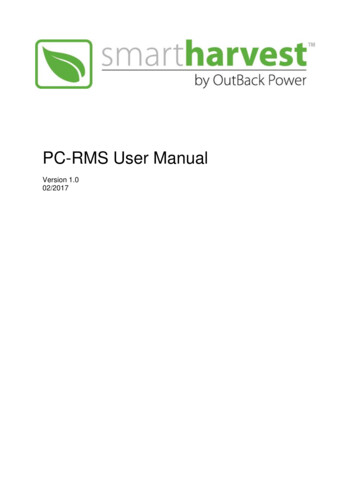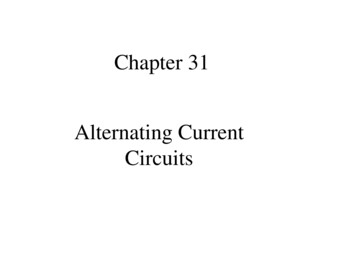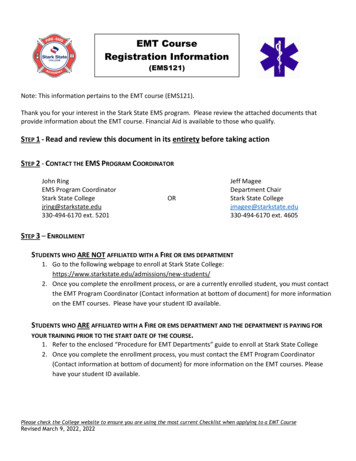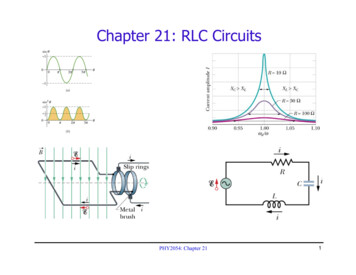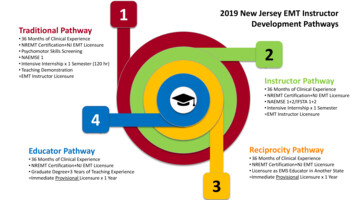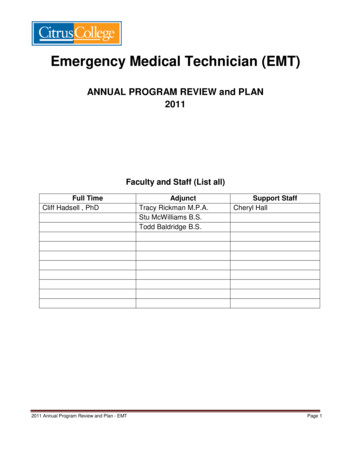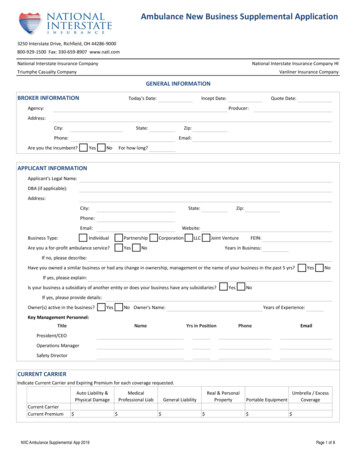
Transcription
RMS vs EMT: the need for newsimulation toolsMatas Dijokas, DTU
Offshore AC grid and HVDC links 5 wind power parks (Psum 3.5 GW) Hub configuration: 220kV AC 5 HVDC links Hub connected to 3 synchronousareas18 September 2019RMS vs EMT: the need for new simulation tools / Matas Dijokas ,DTU2
VSC modelComponents and phasors Converter of MMC typePhase reactor – leakage inductance and series resistance of transformerUnity transformer ratio assumedTwo converter control strategies:– Grid following control– Grid forming control18 September 2019RMS vs EMT: the need for new simulation tools / Matas Dijokas ,DTU3
Grid following control (Onshore VSC)18 September 2019RMS vs EMT: the need for new simulation tools / Matas Dijokas ,DTU4
Grid following control (Onshore VSC) Converter controls DC link voltage andreactive power exchange at onshore station Outer and inner control loops use PI control Decoupled current control18 September 2019RMS vs EMT: the need for new simulation tools / Matas Dijokas ,DTU5
Grid forming control (Offshore VSC)18 September 2019RMS vs EMT: the need for new simulation tools / Matas Dijokas ,DTU6
Grid forming control (Offshore VSC)Converter Converter controls AC hub voltage andactive power sharing Two P-f control strategies:– Different frequency droop values– Same frequency droop valuesVirtual Impedance Controller𝑃𝑖 𝑃𝑖𝑜 𝑘𝑓𝑖 𝑃𝑤σ𝑛𝑗 1 𝑘𝑓𝑗 The frequency droop value kf selectedconsidering:– Capability available on VSC– Inertia of the onshore grids Converter equipped with VirtualImpedance Control18 September 2019Active Power ControllerRMS vs EMT: the need for new simulation tools / Matas Dijokas ,DTU7
Is RMS still good enough toanalyse the dynamics ofzero-inertia systems?
Time domain simulationsStudy case introductionActive power change:1. Power request from onshore station2. Wind power increaseFault:3. DC-link outage18 September 2019RMS vs EMT: the need for new simulation tools / Matas Dijokas ,DTU9
Case 1: Power request from onshore stationFrequencyActive powerVoltage Good match of RMS and EMT simulation regarding active power and frequency responses Slight mismatch between RMS and EMT model regarding hub voltage. EMT is able to detect high frequencyoscillations in hub voltage Overall, RMS model is appropriate when it comes to power exchange between the different onshore grids.No need to consider the transmission cable dynamics18 September 2019RMS vs EMT: the need for new simulation tools / Matas Dijokas ,DTU10
Case 2: Wind power increaseFrequencyActive powerVoltage Good match of RMS and EMT simulations regarding the active power and frequency responses RMS model is unable to detect the maximum voltage deviation and high frequency oscillations in Hubvoltage Overall, for wind power variation RMS model is appropriate when the focus is on active power and frequencyresponse. However, it fails to detect the maximum Hub-voltage deviation18 September 2019RMS vs EMT: the need for new simulation tools / Matas Dijokas ,DTU11
Case 3: DC-link outage The active power from the wind is exported from the hub18 September 2019RMS vs EMT: the need for new simulation tools / Matas Dijokas ,DTU12
Case 3: DC-link outage The active power from the wind is exported from the hub DC-link outage simulated and isolated with two breakers18 September 2019RMS vs EMT: the need for new simulation tools / Matas Dijokas ,DTU13
Case 3: DC-link outage The active power from the wind is exported from the hub DC-link outage simulated and isolated with two breakers Power redirected to remaining VSC links and determined byfrequency droop values kf18 September 2019RMS vs EMT: the need for new simulation tools / Matas Dijokas ,DTU14
Case 3: DC-link outageFrequencyActive powerVoltage No visible frequency mismatch between RMS and EMT models RMS model is unable to detect the maximum deviation and high frequency oscillations in Hub-voltage/activepower overall, for large disturbances (link-outage), RMS model fails to capture the dominant modes thatcharacterize the power and voltage responses18 September 2019RMS vs EMT: the need for new simulation tools / Matas Dijokas ,DTU15
Main takeawaysFor the:1. Thesimulations are able tocapture theafter a2. Thetosimulation reflects power changes and faults accurately, but requiresNeed for new tools to capture the dynamics of zero-inertiasystems under fault, but remain computationally efficientfor large scale systems18 September 2019RMS vs EMT: the need for new simulation tools / Matas Dijokas ,DTU16
Thank You
Good match of RMS and EMT simulations regarding the active power and frequency responses RMS model is unable to detect the maximum voltage deviation and high frequency oscillations in Hub-voltage Overall, for wind power variation RMS model is appropriate when the focus is on active power and frequency response.



